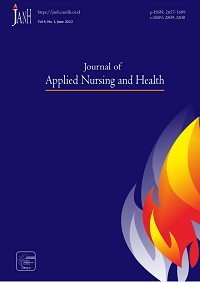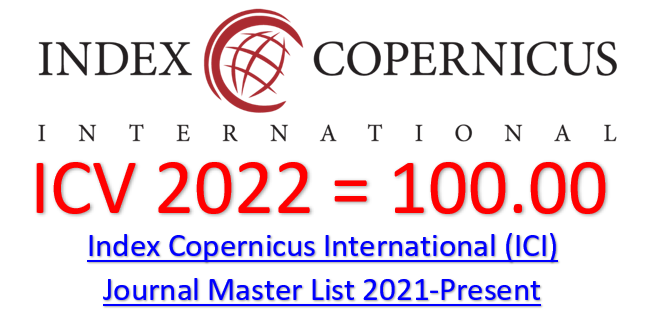Effectiveness of Nutritional Education on Knowledge and Adolescent Attitudes About Stunting in High School
DOI:
https://doi.org/10.55018/janh.v4i1.30Keywords:
Nutrition Education, Stunting, Young Women, Knowledge, AttitudeAbstract
Background: According to the WHO, stunting prevention efforts can start from a young age. Young women can begin to be given knowledge and understanding about the importance of fulfilling nutrition as a teenager. The aim was to increase knowledge and attitude about stunting in adolescent girls at SMA Negeri 5 Manggul village, Lahat district.
Methods: The method is quantitative with a Quasy Experimental One Group Pretest Posttest design, i.e., before the intervention, a pretest is carried out, then after the intervention, a posttest is carried out. The Sampling is total Sampling. This research was conducted at SMA N 5 Manggul village, Kab. Lahat from July to December 2021.
Results: There is an increase in knowledge and attitudes, there is an increase of good knowledge values after giving the intervention to 56%, and the value of good attitude at 60%. So it can be concluded that there is an effect of providing nutrition education with booklet media on the knowledge and attitudes of young women. Statistical tests were carried out using the Paired Samples T-test, the value of p = 0.000 showed that the level of knowledge about Stunting before and after being given nutrition education through booklet media and showed that there was an effect of providing Nutrition Education through booklet media on the level of knowledge about Stunting (p = 0.000).
Conclusion: The Benefit is giving the effect of nutrition education with booklet media in increasing knowledge and attitudes about stunting in adolescent girls. With knowledge about stunting in young women, they can change their behaviour in preparing themselves as prospective mothers to prevent Stunting
Downloads
References
Apriluana, G., & Fikawati, S. (2018). Analisis Faktor-Faktor Risiko terhadap Kejadian Stunting pada Balita (0-59 Bulan) di Negara Berkembang dan Asia Tenggara. Media Penelitian Dan Pengembangan Kesehatan, 28(4), 247–256.
Beal, T., Tumilowicz, A., Sutrisna, A., Izwardy, D., & Neufeld, L. M. (2018). A review of child stunting determinants in Indonesia. Maternal & Child Nutrition, 14(4), e12617.
Bhutta, Z. A., Akseer, N., Keats, E. C., Vaivada, T., Baker, S., Horton, S. E., Katz, J., Menon, P., Piwoz, E., & Shekar, M. (2020). How countries can reduce child stunting at scale: lessons from exemplar countries. The American Journal of Clinical Nutrition, 112(Supplement_2), 894S-904S.
De Onis, M., Borghi, E., Arimond, M., Webb, P., Croft, T., Saha, K., De-Regil, L. M., Thuita, F., Heidkamp, R., & Krasevec, J. (2019). Prevalence thresholds for wasting, overweight, and Stunting in children under five years. Public Health Nutrition, 22(1), 175–179.
Hasanah, U. (2020). Pengaruh media booklet terhadap pengetahuan ramaja putri mengenai Stunting di Kabupaten Probolinggo. Poltekkes Jember.
Leroy, J. L., & Frongillo, E. A. (2019). Perspective: what does Stunting mean? A critical review of the evidence. Advances in Nutrition, 10(2), 196–204.
Linawati. (2017). Hubungan Pengetahuan dan sikap remaja putri Dengan Penanganan Dismenorea si SMAN 10 Kendari Kota Kendari Provinsi Sulawesi Tenggara. Poltekkes Kemenkes Kendari.
Notoatmodjo. (2010). Promosi Kesehatan dan Ilmu Perilaku. Rineka Cipta.
Notoatmodjo. (2014). Ilmu Perilaku Kesehatan (Rineka Cip).
Nursalam. (2013). Konsep Penerapan Metode Penelitian Ilmu Keperawatan. Jakarta. Salmbe Medika.
Riskesdas. (2018). Riset kesehatan dasar. Badan penelitian dan pengembangan kesehatan. Kementrian kesehatan RI.
Simanjuntak, A. R. (2019). Pengaruh Pendidikan Gizi dengan Media Booklet terhadap Pengetahuan dan sikap remaja putri tentang 1000 Hari Pertama Kehidupan (HPK) di SMA RK Serdang Murni Lubuk Pakam. Poltekkes Kemenkes Medan.
Sriwiyanti. (2021). Effektifitas Penyuluhan dengan Menggunakan Media Booklet Terhadap Tingkat Pengetahuan Gizi Seimbang pada Anak SD Negeri 23 Pagar agung Kabupaten Lahat. Strada Jurnal Kesehatan, 10(1).
Titaley, C. R., Ariawan, I., Hapsari, D., Muasyaroh, A., & Dibley, M. J. (2019). Determinants of the Stunting of children under two years old in Indonesia: a multilevel analysis of the 2013 Indonesia basic health survey. Nutrients, 11(5), 1106.
Vaivada, T., Akseer, N., Akseer, S., Somaskandan, A., Stefopulos, M., & Bhutta, Z. A. (2020). Stunting in childhood: an overview of global burden, trends, determinants, and drivers of decline. The American Journal of Clinical Nutrition, 112(Supplement_2), 777S-791S.
Vilcins, D., Sly, P. D., & Jagals, P. (2018). Environmental risk factors associated with child stunting: a systematic review of the literature. Annals of Global Health, 84(4), 551.
WHO. (2017). Global Health Observatory (GHO) data. World Health Organization. http://www.who.int/gho/ncd/risk_factors/bloaod_pressure_prevalence_text/en/
Downloads
Published
How to Cite
Issue
Section
License

This work is licensed under a Creative Commons Attribution-ShareAlike 4.0 International License.

























